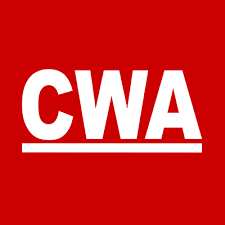New York, NY – Last month Assemblywoman Aileen Gunther [D-Middletown] introduced the Safe Staffing for Quality Care Act. This submission was the sixth time the bill was on the floor of the New York State Legislative body since 2009. But after Attorney General Letitia James’ unfavorable Jan. 28 report on how COVID-19 was responsible for nearly double the number of deaths of for-profit nursing home residents that was reported by the state’s Dept. of Health, this might be the year the bill gains traction.
“The Attorney General’s report shows a damning and bleak picture of New York’s nursing homes,” Gunther said in a statement. “Attorney General James indicated that insufficient levels of staffing were at least partly to blame and said, ‘poor initial staffing before the pandemic meant even less care for residents during the pandemic.'”
The Retail, Wholesale and Department Store Union [RWDSU] is backing the Safe Staffing for Quality Care Act, which will establish minimum standards for nurse-to-patient ratios under the penalty of revocation of a facility’s operating license.
“Nursing home workers watch over our loved ones every day, and they must have the time they need to provide the proper care to our mothers, fathers, grandparents and elderly,” said RWDSU President Stuart Appelbaum said. “Without safe staffing levels, workers are pulled between patients – which try as they might, doesn’t allow them to give the full care and attention to residents.”
Mea Archer, a certified nurse assistant at Valley View Manor Nursing & Rehabilitation in Norwich, New York, where she is also the chief union RWDSU steward, knows what it was like to work at an understaffed nursing home pre-COVID and now all too well.
“Before COVID, there were times that we would go through periods where we were not fully staffed, we didn’t have enough staff, or we would have to work with just two people instead of four people,” said Archer, who has been a CNA at Bellevue since 2013. “Being in nursing was such a demand before the pandemic even started. The pandemic just made conditions way worse.”
Pre-COVID-19, the nursing home also acted as a rehab facility and had 40 beds for long-term care patients and 20 to 40 beds for those in rehab, according to Archer. The long-term facility was often at capacity. Typically, the nursing home should have two medical nurses, two treatment nurses and four aides for both sides working eight-hour shifts. But more often than not, nurses had 16-hour mandatory double shifts.
“There was nobody to take their place,” said Archer. “Sometimes it was more than 16 hours, but if there was no one to fill a hole in the schedule, they would have to wait for a release. That is what made them tired out because they had to work two shifts a couple of times a week. Sometimes, I heard, even more…every day.”
There were times where there was one nurse on each side and sometimes just two aides, which meant double the work for those at the nursing home, according to Archer. During COVID-19, the shortage was more pronounced for the CNA.
“We had that minimum staff to begin with,” said Archer. “If we are lucky, we have the bare minimum and without a standard set, there is sometimes one aid for both sides or one nurse for both sides.”
For the mother of three, who fears exposing her 61-year-old mother to COVID-19, this has been a stressful and hectic time for both the nurses and the residents.
The DOH reported that from March 1, 2020 to Jan. 19, 2021, there were 9,786 deaths at nursing homes. James’ report, however, estimates that the number is nearly double.
“As the pandemic and our investigations continue, it is imperative that we understand why the residents of nursing homes in New York unnecessarily suffered at such an alarming rate,” said James. “While we cannot bring back the individuals we lost to this crisis, this report seeks to offer transparency that the public deserves and to spur increased action to protect our most vulnerable residents.”
Dr. Howard Zucker, the state’s health commissioner, has pushed back on the notion that the DOH intentionally underreported nursing home residents’ deaths via a statement on Governor Andrew Cuomo’s website.
“The report found that operators failed to properly isolate COVID-positive residents; failed to adequately screen or test employees; forced sick staff to continue working and caring for residents; failed to train employees in infection control protocols; and failed to obtain, fit, and train caregivers with PPE,” said Zucker. “Additionally, it identifies examples in which nursing home operators reported different information to DOH then to the OAG.”
Zucker further states that some deaths were reported twice – once as being at a specified nursing home and another time at a medical facility – hence why the DOH is already doing an audit on the data it has received.
The DOH has also issued 140 infection control citations to nursing homes, a dozen immediate jeopardy citations to nursing homes, according to Zucker and has agreed that reforms at nursing homes are necessary.
“Ultimately, the OAG’s report demonstrates that the recurring problems in nursing homes and by facility operators resulted from a complete abdication by the Trump administration of its duty to manage this pandemic,” said Zucker. “There is no satisfaction in pointing out inaccuracies; every death to this terrible disease is tragic, and New York was hit hardest and earliest of any state as a direct result of the federal government’s negligence.”
Appelbaum believes that the Quality Care Act will ensure reform in nursing homes.
“This bill will improve patient and worker safety by establishing staff-to-patient ratios for nurses in hospitals, nursing homes and other health care facilities based on the type of care provided and the number of patients,” said Appelbaum.
Gunther said, “We can no longer wait for highly paid hospital and nursing home executives to properly police themselves. We have to take action on behalf of the people of this state.”



